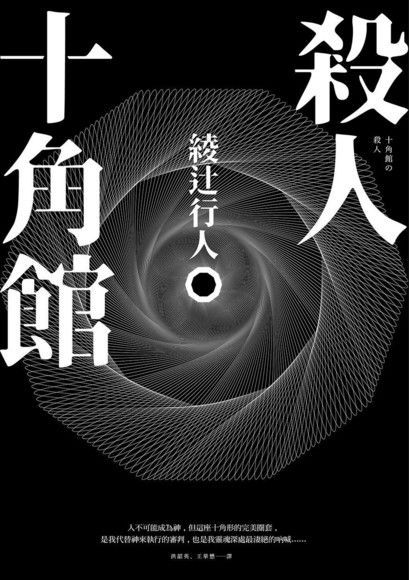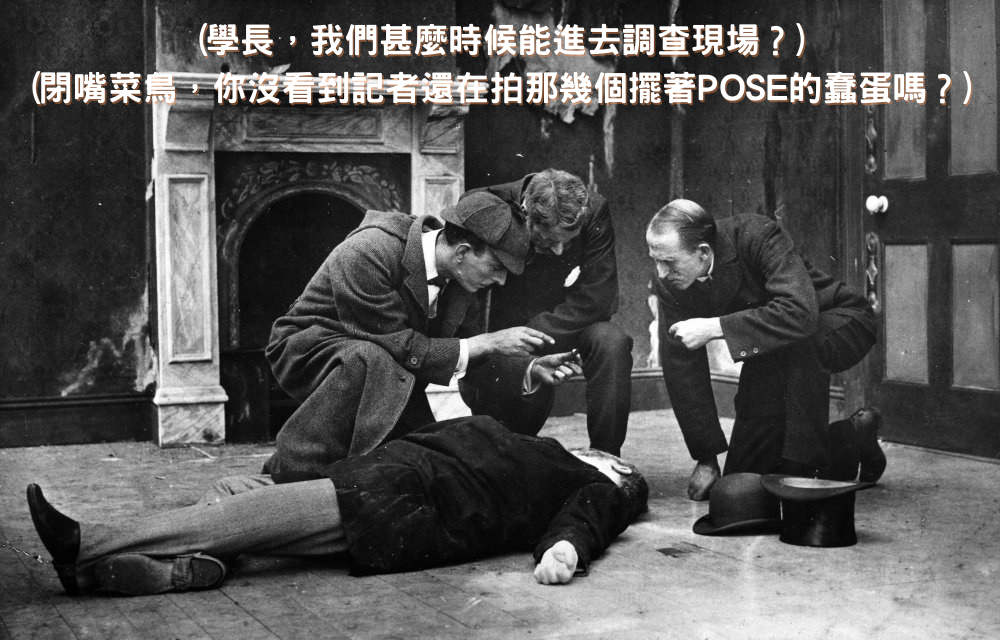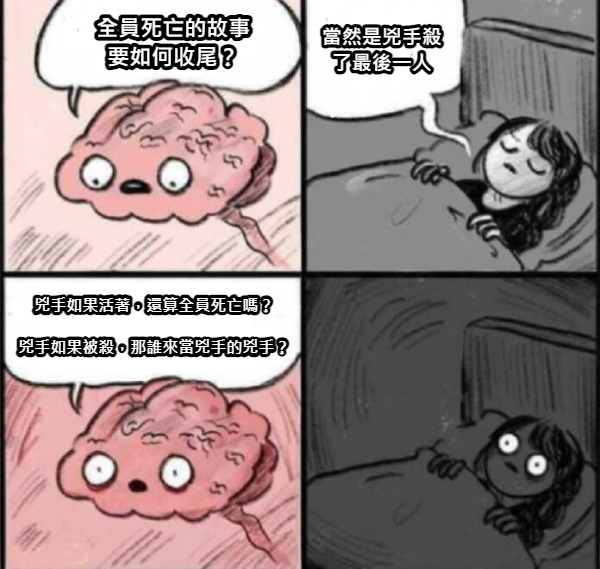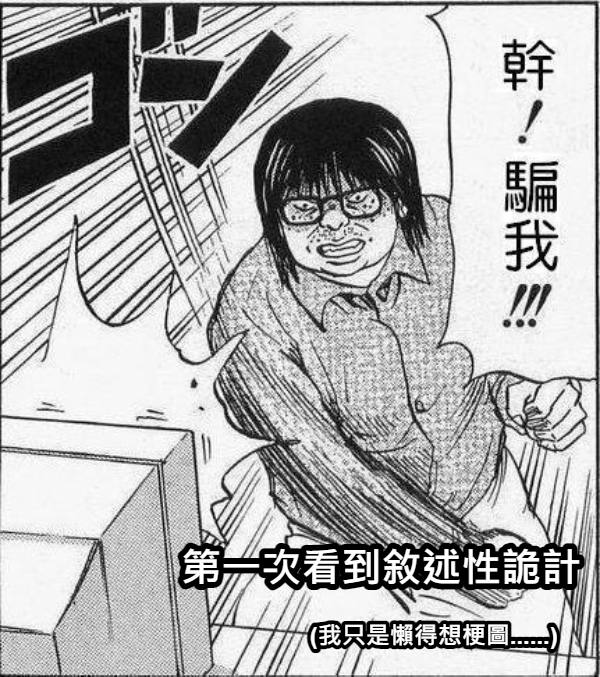A classic but a creation of positive and negative poles - "Murdering Ten Corner Pavilion"

The epitome of the story - love makes every day of life so sad
Everything starts with the boat heading to "Jiaodao". Except for the captain and his son, the other six tourists are members of the University's Mystery Novel Research Association. Let everyone produce high-quality articles. Of course, the location chosen by the Reasoning Research Institute is by no means unusual. Six months ago, there was an unsolved case of four murders and one disappearance on Jiaodao Island, and the police still regard the missing but hard-to-find gardener as a suspect. At the beginning of the story, we can vaguely see the shadow of Agatha Christie's famous book "Leave No One". It is also a group of people who went to the isolated island to prepare their own small trip. However, due to the different motives arranged by the author, we can see completely different spelling. The beginning of "Leave Not One" describes that people are going to overseas islands with different thoughts and motives. Here, Agatha begins to describe the characteristics of different roles, so that readers can vaguely feel that this group of characters with stories gathered together. Nothing good will happen together. And "Decade of Killing" focuses on the character nicknamed "Ellery". He begins to express his expectations for mystery novels and his concerns about conflicts brought about by technological development. In fact, such concerns now seem It can be said that it makes sense. When writing a mystery novel, the author must exclude the convenience brought by technology, or make these technologies useless, otherwise readers will easily come out because there are no bridges such as fingerprints, bloodstains, or monitors. play.

In order to create a creepy atmosphere after going to the island, and at the same time not to make the characters wary too quickly, the two authors used a little bit of thought. In "Leave Not One", ten little porcelains and terrifying nursery rhymes are used to imply that the storm is coming. , The little porcelain and the warriors in the nursery rhymes all reflect the name of Warrior Island, and everyone is amused even if they do not notice the difference, thinking it is the humor of the island owner, and "Murdering Ten Corner Pavilion" uses the sign "The first victim The words "killer", "murderer" and "detective" are used to indicate the fate of everyone, but they leave a line of thought for everyone to think that it may be someone's prank, and they want to play some reasoning game and don't care. So far, the bridges arranged by the two authors are still reasonable enough.
The next two people's story lines have different development for their own laying out. The theme of "Leave No One" is trial, and the guests invited to the island have their own pasts that cannot be punished by law. In order to rationalize the murderer's motives, Agatha spends her space describing what happened to her in the past, and her own explanations for her mistakes. Another advantage of doing this is that it can make the characters three-dimensional, and readers can have a deeper understanding of up to ten characters on the scene, and the rhythm can also match the rhythm implied by the song to die one by one, without making readers feel irritable. The theme of "Murdering Ten Corner Pavilion" is set as revenge. The murderer did not want to let the deceased know why he died, so the promotion of the plot is divided into two lines. The first line is to let readers be attracted by the hunting process on the island. On the one hand, the former members who did not participate in the activities were arranged to receive criminal notice letters as a route to trace their motives.
In terms of reasoning, the setting of the death of all members makes it difficult for the author to arrange for the murderer to leave any clues that are enough to deduce his identity. If readers can see it but turn a blind eye to the characters in the play, the rationality will be greatly reduced, which will inevitably affect readers' reading. A sense of commitment, so neither of them used too complicated or sophisticated means to kill, and the survivors could not provide any alibi. This is more like what may happen in reality. It is more reasonable for a too complicated killing mechanism to appear in a B-level horror film. The biggest challenge of the work is how to arrange the death of the last person. This point can only be said that although it is completely unacceptable, the performance methods of both sides are a bit unsatisfactory.

The shadow of "Leave No One" can be seen everywhere in Aya Tsuji's debut. It was also regarded as a new star in the Japanese reasoning circle when it was first published, but even both of them can see the author's intentions. The wind commentary does not leave a classic status like "Leave Not One". Personally, I think the biggest difference should be the sense of expectation in the plot planning. In "Leave Not One", readers know that everyone will die, but when the characters become more and more With fewer and more vigilant situations, Ajiasha uses the suspense created by Songyao and Little Porcelain, as well as the interaction and mental calculation between the characters, effectively allowing readers to constantly divert their guesses about the suspect and try to find the murderer. , and such a combination of Storm Villa and Songs of Murder has also become a combination that makes people talk about it.
Looking back at "Murdering Ten Corner Pavilion", everything that happened on the island was not guided by songs, and the means of killing were more simple, heavy blows, poisoning and strangulation. In the case of proof, when there is no obvious person who may commit a crime, the reasoning of everyone in the island becomes redundant. The reader can read it carefully, but skipping it will not affect the understanding of the subsequent plot. Then there is the route of the island to track down the murderer's mobile phone. Here, the pedestrians of Ayatsuji arranged the unsolved case of the architect Nakamura Qingji to kill the family. Nakamura is the owner of the island and the designer of the Shijiao Pavilion. He lives with his wife and four servants. The husband and wife live in another building on the island. In the house "Cyan Pavilion", it was only that the house had been burned down about half a year ago. All four people died of different causes of death before the fire, and a gardener was missing on the island that day. While everyone was happily traveling, a letter was sent to everyone's home, accusing everyone of being responsible for the death of Chiori Nakamura, a student from the club a year ago, and the person who signed the envelope was Seiji Nakamura, which makes people think to whether the two are father-daughter relationship. This arrangement is not bad. Whether Nakamura Qingji is a fraudulent death, on the one hand, echoes the conclusion of "the murderer speaks outside the island", and on the other hand, it also gives Jiangnan Xiaoming, a former member of the club who played the detective outside the island, a motive to pursue it.
It is a pity that although the story structure of Ayatsuji Pedestrian is very complete, I personally think that the place where "Murdering Ten Corner Pavilion" cannot compare to "Leave No One" is that the part that reveals the mystery at the end uses "narrative tricks". Let's go back to the beginning of the book and listen to the college student nicknamed "Ellery" talking eloquently. Ayatsuji Pedestrian expresses his boredom with "socialism" through his mouth. In his opinion, reasoning should go back to the simplest way. Elements, Murderer vs Detective.
A ruthless police agency is not worthy of applause - it is inferior to the famous detectives in the golden age of reasoning, there is no gorgeous "theory" and "reasoning", only the modern search technology that surpasses the famous detectives.
But the final arrangement of the mystery is the use of "narrative tricks" that cannot be reasoned, which makes the status of this book drop another level. I'm not saying that narrative tricks are bad. In fact, there are many good works that use narrative tricks to allow readers to read again and again. However, it must be understood that once such tricks are revealed, the motivation of readers to repeat reading will be greatly reduced, so It needs to be matched with plot layout and in-depth character characterization to make the work impress the readers first, and then rely on the foreshadowing to bring the amazement of "Ah! That's the way it is". However, "The Ten Corners of the Killing" initially seemed to want to take the path of challenging readers like Ellery Quinn, but it was bound by narrative tricks and could not really fully reveal the evidence. As a result, the aforementioned Characters that are not deeply portrayed have become shortcomings. There is no atmosphere and psychological depiction like "Leave No One", and only a sense of surprise is left. It is no wonder that after the prosperity of various reasoning works, such a sense of surprise is because It is highly replaceable, and it cannot replicate the sense of surprise in the era when the book was just published, nor can it obtain a relatively equal evaluation.

Historical Silhouette - Polarized Evaluation of the Killing Ten Corner Pavilion
From a current point of view, it is really difficult to understand why this book was so highly rated at the time. For me, if you want to explain the status of this book, perhaps it should be explained from the rise and fall of the Japanese reasoning genre. To talk about Japanese mystery novels, the first writers to be mentioned are Edogawa Ranpo and Yokogu Masashi.
Edogawa Ranbu started to gain a foothold in the literary world with "Two Points of Copper Coins" and "D-saka Murder Case", both of which are well-established works of reasoning. Although the literary world has received good reviews, the public's acceptance is not high, and they feel troubled. Bu began to add elements of different colors to his works. From the current point of view, it is more like a "blue spider web", and it is still a curious version. On the other hand, Masashi Henggou focuses his works on the countryside and post-war decadent Tokyo, but the murderous intent hidden behind the big family can still be combed through logic and reasoning. That is to say, the prosperous world of mystery novels at this time is the "Benge School with a logical reasoning process", while the motives are relatively simple "money, love, hatred".
Since the 1950s, as Japan's economy has taken off, various social problems have also arisen. At this moment, the world of reasoning has ushered in a master, that is, the master of the "social school" - Matsumoto Kiyocho. Literature at this time focused on reflecting social problems, highlighting the suffering of the people at the bottom who were bound by the social system. Therefore, the means of killing began to be simplified, and instead the motive and social background of the killing were emphasized. But in fact, there are not so many problems in society for writers to play. Even if there are, Matsumoto Kiyotaka has only one. Gradually, this type of novels evolved into genre novels, that is, novels that simply presented social customs and their different appearances. Compared with the heyday, they were less critical or highlighting social problems.
The evolution of speculative novels has made me have an illusion some time ago, because the story is propelled by the seeds of incomprehension planted in the readers' hearts, and the ending is to solve this confusion in the readers' hearts. In a way, it can be said to be a mystery novel? But in fact speculative novels (especially natural reasoning) have more rigorous principles, although even famous writers such as Masashi Yokogawa or Edogawa Ranpo may not necessarily follow them, that is, the rigor of the reasoning guide in the story That's what reasoning writers are after. At this point, I can somewhat understand the reason why "Murdering Ten Corner Pavilion" was able to cause discussion when it was published. In that era when we were tired of socialist stories, readers who were fascinated by reasoning must have a sense of impatience with the choices on the market. The story did not have enough clues, nor did the detective's rigorous judgments, only relying on the plot to keep clearing the fog, How could this be speculative fiction? Therefore, "Murdering Ten Corner Pavilion" returns to the most primitive style, with Stormy Villa, a sudden murder plot and a false detective who constantly deduces, providing the "speculation novel" that readers have been looking forward to for a long time, plus the story uses a narrative Sexual tricks, a writing technique that was not popular at the time, and Shoji Shimada, a master of the original school, was recommended by the famous name of "New Benge", so it seems that this book can be sold well and has a certain reputation. Status also makes sense.

In conclusion, this book may not be in line with modern readers' understanding of "changing the times", but Aya Tsuji Pedestrian actually brought the "new character" and "narrative tricks" to the prosperous world through this book, even if the plot of the book is a little bit disgusting. It is monotonous and the method of crime is not rigorous enough, but it has indeed opened the eyes of many readers in the current generation, making everyone amazed that a mystery novel can be written like this, and such an evaluation is enough to deserve a classic title, even with the passage of generations. The popularization of mystery novels makes this book less eye-catching in comparison, and may on the contrary also highlight its immaturity, but considering the time and space background and its influence, this book is still worth reading. place.
Like my work? Don't forget to support and clap, let me know that you are with me on the road of creation. Keep this enthusiasm together!

- Author
- More